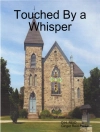In her masterful novel, ‘The Daughter of Time, ‘ Josephine Tey intertwines the art of detective fiction with astute historical analysis. Set in the confines of a modern hospital room, Tey’s protagonist, Inspector Alan Grant, becomes engrossed in the mystery surrounding King Richard III and the infamous events leading to the demise of the Princes in the Tower. Through Grant’s intense investigation, Tey deftly explores themes of truth, justice, and the malleability of historical narrative. The novel’s unique blend of rich character development and intellectual inquiry invites readers to reconsider historical biases and the complexities of reputation. Josephine Tey, born Elizabeth Mackintosh, was a prolific writer and a trailblazer in the crime genre. Her background in theater and her fascination with historical events largely influenced her work, allowing her to blend suspense with deep philosophical questions. Tey’s experiences in the early 20th century, a time ripe with shifting societal attitudes towards authority and the past, provided fertile ground for her to interrogate historical figures with a critical, modern lens. ‘The Daughter of Time’ is an essential read for anyone interested in the intersections of history and fiction. With its compelling narrative and thought-provoking themes, Tey’s novel invites readers to engage in a deeper exploration of how history is written and who gets to tell it. It challenges conventions, making it both a gripping mystery and a powerful commentary on the nature of truth.
Про автора
Josephine Tey, a pseudonym for Elizabeth Mac Kintosh (1896–1952), was a distinguished Scottish author best known for her contributions to the mystery and historical fiction genres. Her work has garnered significant acclaim for its wit, psychological depth, and innovation in narrative structure. Tey’s most acclaimed book, ‘The Daughter of Time’ (1951), is a unique detective novel that involves the posthumous rehabilitation of King Richard III. The protagonist, Inspector Alan Grant, solves historical puzzles from his hospital bed, showcasing Tey’s ability to blend sleuthing with historical inquiry. Acclaimed by the British Crime Writers’ Association as the greatest mystery novel of all time, it exemplifies Tey’s nuanced approach to the genre. Her literary style is characterized by tight plotting, well-rounded characters, and an undercurrent of social commentary, which has earned her a respectful position among the luminaries of 20th-century British literature. Though her life was relatively private and her career brief, as she died at the young age of 55, Tey’s work endures in its originality and influence on subsequent writers within the crime fiction field.












